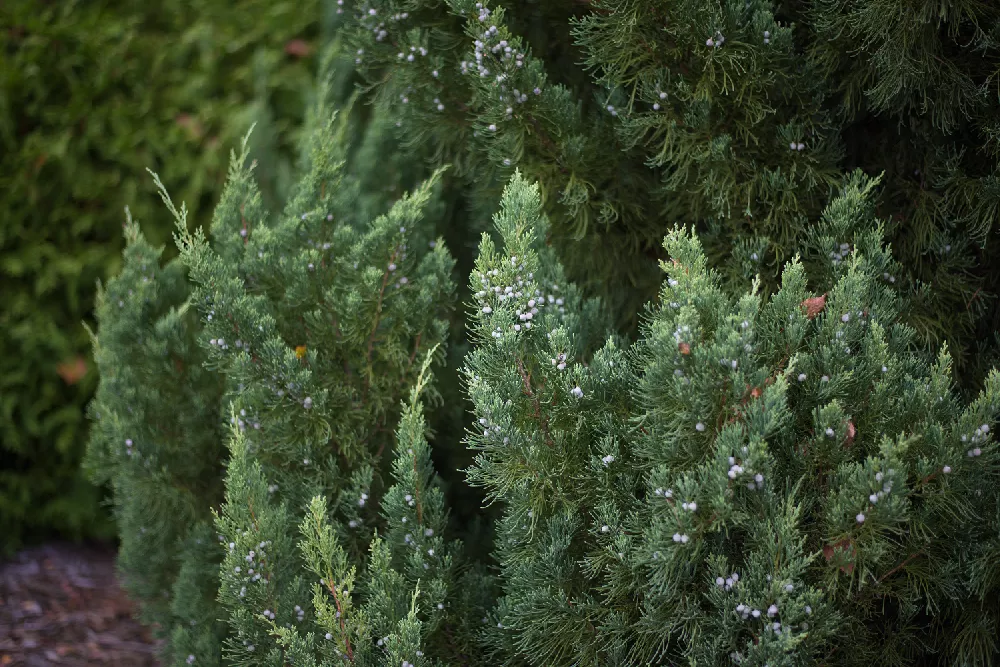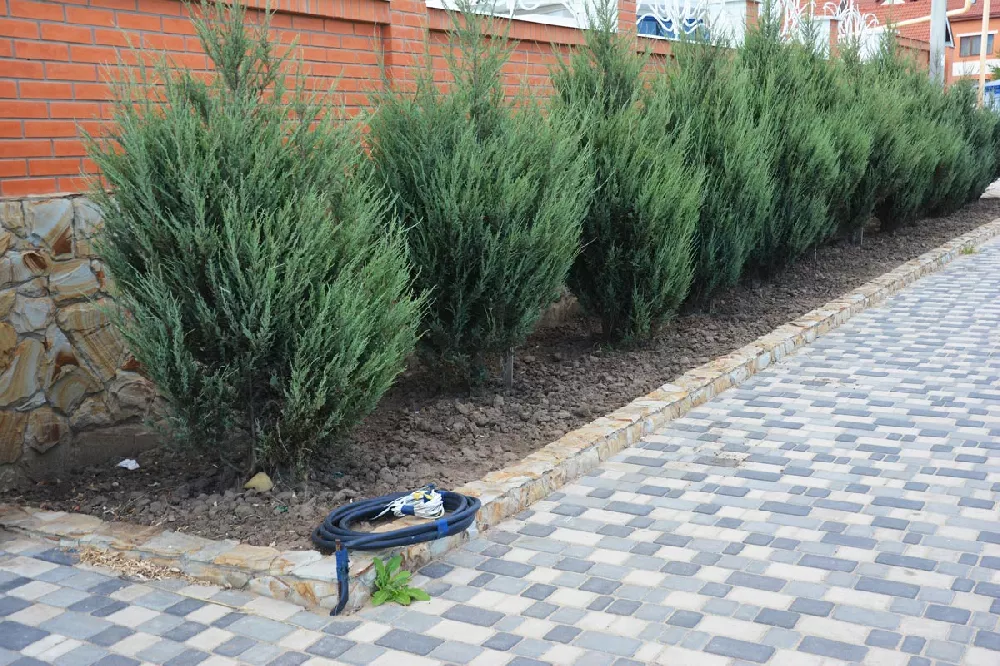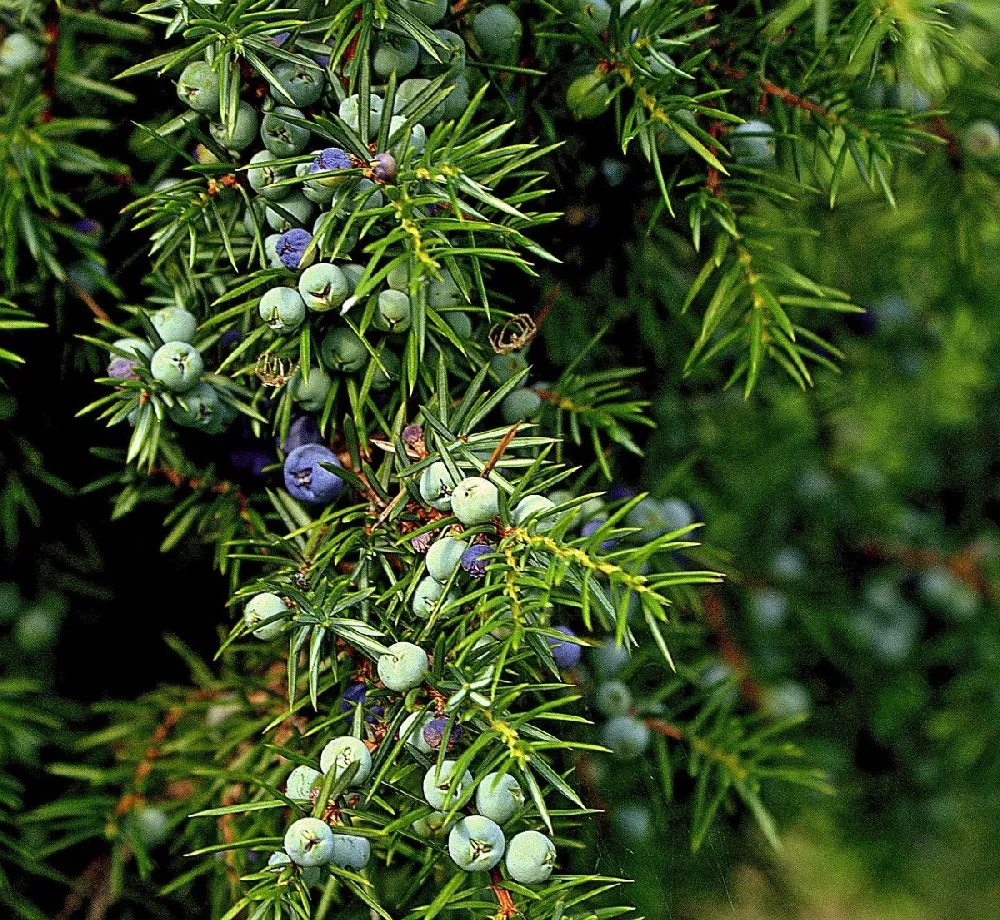- Home >
- Shrubs and Bushes >
- Blue Star Juniper Shrub
Blue Star Juniper Shrub for Sale - Buying & Growing Guide
The blue star juniper shrub certainly lives up to its name due to its vibrant set of foliage that shows a consistent array of blue, green, and silver. You'll also find that the blue star juniper shrub, known scientifically as Juniperus squamata 'Blue Star,' is incredibly adaptable and easy to keep alive even if you don't have much gardening experience. As long as this plant receives the full sunlight it loves, it will thrive in nearly any planting location.
- The bright foliage of the blue star juniper is green, blue, and silver.
- The blue star juniper shrub remains small with dense foliage throughout its life span.
- This plant is resilient and very easy to care for.
Enter your zip code to find nearby stores that may carry this plant.
Plant Care
Sunlight

The blue star juniper shrub will grow best when it receives about 6 hours of light per day or more.
Watering
Water weekly or multiple times per week during establishment. After establishment, water during prolonged droughts.
Fertilizing

Use a general-purpose fertilizer once per year when this plant is young.
Planting and Care
Planting instructions
If your growing location receives full sunlight, about 6 hours of light per day or more, your blue star juniper shrub is likely to thrive. These plants show an astounding ability to survive in nearly any type of soil, including clay soils and those that are very loose and dry. Plant this shrub in a hole that is as deep as the root ball is tall and about twice as wide. Then, loosen the root ball and the sides of the hole to encourage the roots to spread laterally once planting is complete.
Watering and nutrients
You’ll need to water your blue star juniper shrub about once per week or more, if needed, during the first season or two to aid establishment. This establishment period is also the time in which it is most necessary to feed this plant in early spring with a balanced fertilizer. Following establishment, your blue star juniper shrub will no longer need fertilizer or regular watering. In fact, you can stop fertilizing entirely and only give your plant water during the hottest parts of the year or during droughts.
Pollination
Like nearly every juniper plant you’ll come across, the blue star juniper shrub uses a set of male and female cones, which appear on different plants, to conduct pollination. When the male cones open, they release pollen, which travels through the air until it finds a female plant. Once the pollen contacts the cones of a female plant, the female cones will begin to develop into a small, berry-like form. While not a true berry, these cones are responsible for carrying this plant’s seeds.
Pruning
You should prune your blue star juniper shrub during the late winter, before the plant has begun to put forth new growth. During that time, you can remove any branch that is dead, damaged, or showing signs of disease. It can also be important to thin the foliage of your blue star juniper shrub. The blue star juniper grows in a dense habit, and thinning the foliage can help maintain proper air circulation, reducing the odds of moisture-related infections.
Pests, diseases, and animals
Overwatering and excessive moisture are the leading reasons why your blue star juniper shrub may experience a disease complication. In those cases, your plant may develop root rot, which is especially common in heavy soils that don’t drain properly. Additionally, the blue star juniper plant may also experience pest infestations. Aphids, borers, and scale insects are some of the most common creatures that harm this plant. Despite those threats, the blue star juniper shrub remains more capable of warding off pests and diseases than other junipers.
Achieving maximum results
The bright blue-tinted foliage of the blue star juniper shrub is its most attractive feature, which is why some gardeners are concerned when their plant’s foliage starts to fade. If this happens to your blue star juniper shrub, you should know the reason why fading foliage can occur. At times, faded foliage is the result of growing conditions that are too humid or a bit too warm. Occasionally, foliage discoloration can be a sign of a more serious issue as well, such as tip blight, in which case the foliage will begin to turn brown.
FAQs
What is the correct spacing for a blue star juniper shrub?
While the blue star juniper is not a particularly large plant, you will need to consider spacing when you plant it. This cultivar grows to be about 3 feet tall and 4 to 5 feet wide. Based on that mature size, you should give your blue star jumper shrubs about 3 to 5 feet of horizontal spacing when you plant them. Since these plants grow slowly, you won't need to worry about them expanding beyond that space any time soon.
How can you tell if your blue star juniper is getting too much water?
Overwatering is one of the biggest threats to the otherwise easy-to-care-for blue star juniper shrub. If you grow this plant in your garden, you should understand the signs of overwatering so that you can resolve the issue before it completely kills your plant. When your blue star juniper shrub gets too much water, its foliage may turn brown or yellow. The plant may also develop root rot. If you notice any of these signs, you should reduce your watering or transplant your blue star juniper to a growing location with better drainage.
Can you grow a blue star juniper shrub in shade?
One of the few non-negotiable requirements for a blue star juniper shrub is full sunlight. This plant will not perform to its fullest in partial shade and cannot tolerate full shade. For the best results, plant your blue star juniper shrub in an area that receives at least 6 hours of direct sunlight every day.
Compare Similar Products
You can't add more Product Name - Product size to the cart.
OK









